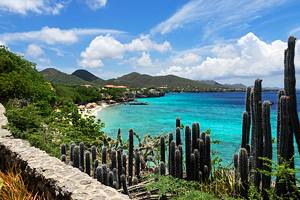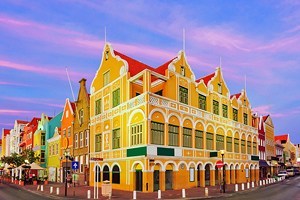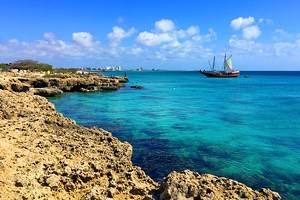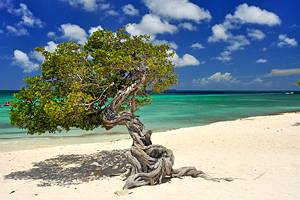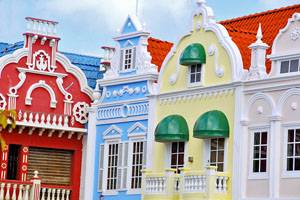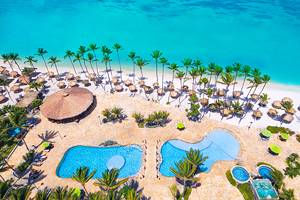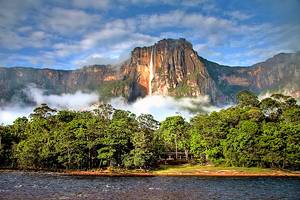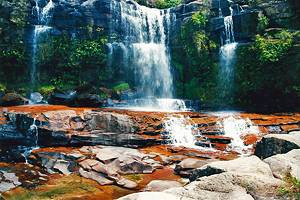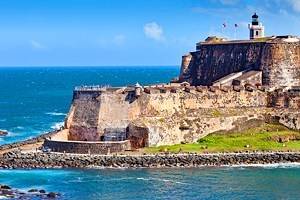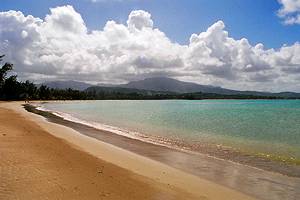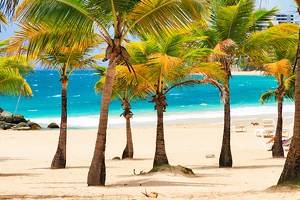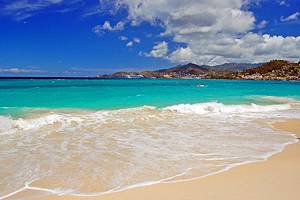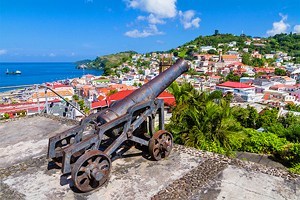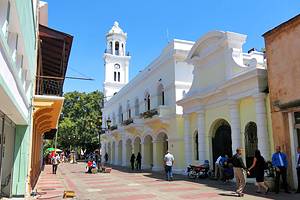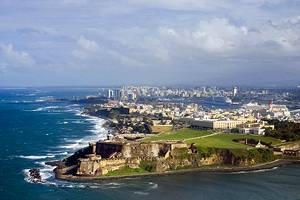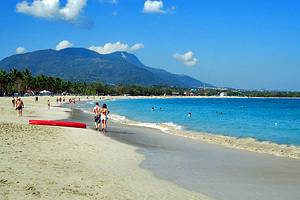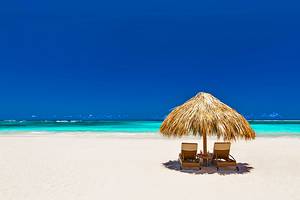Tourist Attractions in Bonaire, Saba, and St. Eustatius
Bonaire, St. Eustatius, and Saba, also known as the "BES islands," comprise the trio of Dutch territories called the Caribbean Netherlands. Luring many nature lovers and eco-tourists, all three islands offer excellent opportunities for diving, swimming, snorkeling, and hiking.
Bonaire, just off the north coast of Venezuela, near Curaçao and Aruba, is famous for its pioneering conservation efforts. Much of the island is protected, and its marine park offers some of the best diving in the Caribbean. Windsurfing and kayaking are other top things to do in Bonaire, and the island's diverse ecosystems include cactus-cloaked hills, salt pans, mangroves, coral reefs, and sunbaked beaches.
St. Eustatius, also known as "Statia," lies east of Puerto Rico and is home to a dormant volcano, the Quill. This tiny island's varied terrain includes rainforest, rocky beaches, and vibrant coral reefs with excellent opportunities for diving. St. Eustatius was once a thriving port during the 17th and 18th centuries. Today, the island is making efforts to preserve its natural assets and heritage buildings.
Northwest of St. Eustatius, Saba may be tiny at only 13 square kilometers, but the 887-meter peak of its volcano is the highest point in the Netherlands. Hiking is excellent on the slopes of the aptly named Mount Scenery, and the marine park offers some truly pristine dive sites.
Discover the best places to visit in the Caribbean Netherlands with our list of the top tourist attractions in Bonaire, St. Eustatius, and Saba.
Bonaire National Marine Park, Bonaire
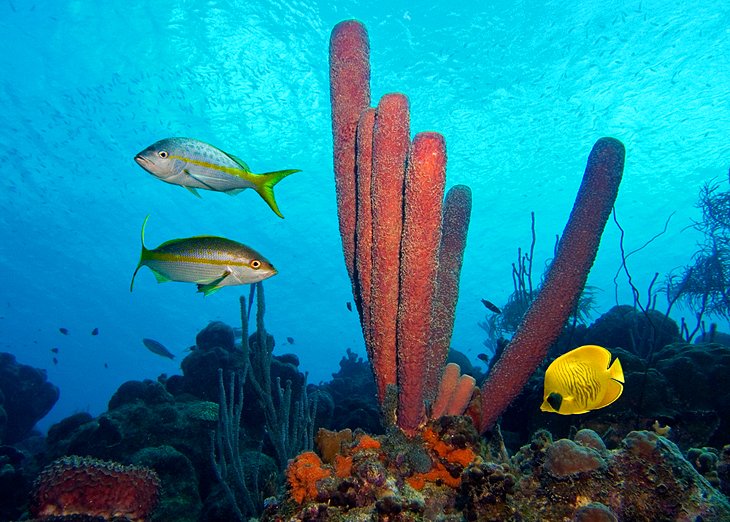
Comprising a system of fringing reefs, seagrass beds, mangroves, beaches, and lagoons, Bonaire National Marine Park is one of the Caribbean's top places to visit for diving. The park encircles all of Bonaire, as well as Klein Bonaire islet, and is famous for its water clarity, calm seas, and diversity of fish life.
Snorkelers can access some of the reefs from shore. The park is maintained by a non-profit, non-governmental organization noted for its pioneering marine conservation efforts. It was the first marine park with a network of permanent moorings.
Official site: http://www.bmp.org
Mount Scenery Hike, Saba
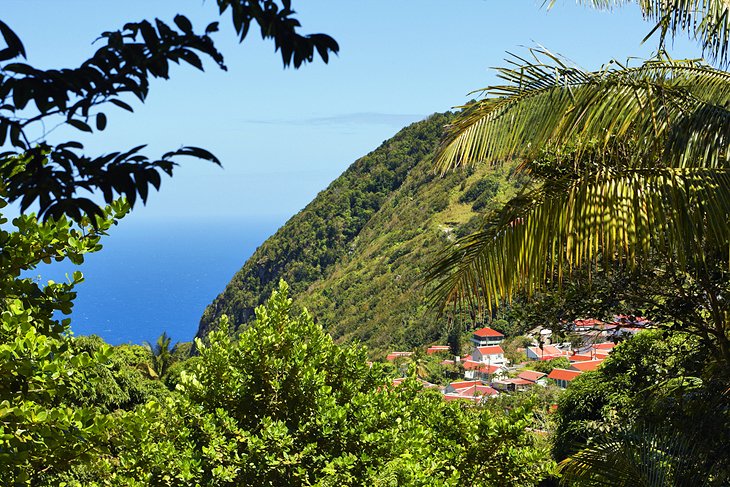
Saba hiking can be hugely rewarding, and one of the most popular trails is on Mount Scenery. This 887-meter-high summit of Saba's dormant volcano is the highest point in the Netherlands.
The most popular hike to the summit begins in Windwardside, Saba's second largest town. This challenging trail involves climbing up more than a thousand steps, some of which are slippery with moss and mud, but it's worth it. Near the top is a mist-shrouded cloud forest, and on a clear day, you can stand on the summit and enjoy a panoramic view of Saba and its neighboring islands.
The hike takes about 90 minutes, and hiking poles and sturdy footwear are highly recommended.
Official site: http://www.sabapark.org/hiking_trails/
Saba National Marine Park, Saba
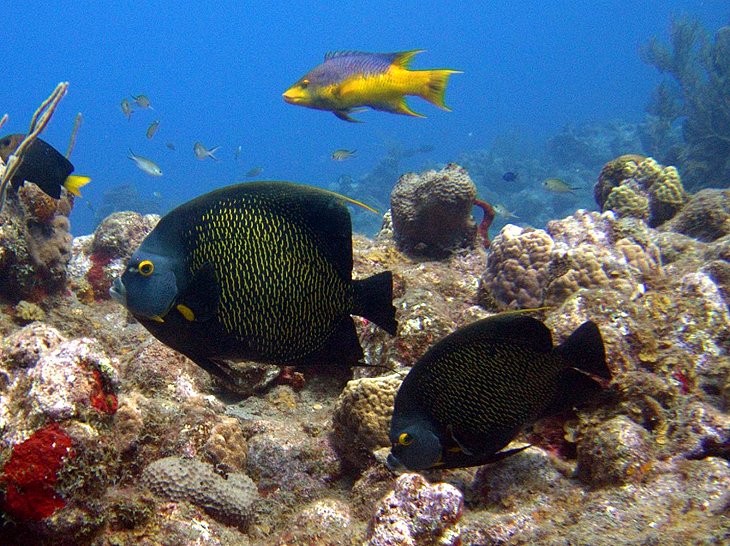
Saba National Marine Park encircles this tiny island and is zoned for various aquatic activities with separate areas for fishing, diving, swimming, and boating.
Because Saba is volcanic in origin, divers will find hot springs and underwater lava tunnels around the island. Formed by volcanic activity, The Pinnacles are among the most popular dive sites in the park. Rising from the sea floor, they're covered in corals and sponges and are home to a dazzling diversity of fish.
All dives take place in the protected marine park under the guidance of the island's dive operators, and permanent moorings mark approved sites.
The preservation of the park has insured minimal impact by tourists, resulting in an unsullied seascape of colorful coral and sponges and an abundance of aquatic life, such as sea turtles, stingrays, and tropical fish.
The coastline of Saba is rocky with few beaches, however snorkelers will enjoy Torrens Point.
Official site: www.sabapark.org
Washington-Slagbaai National Park, Bonaire
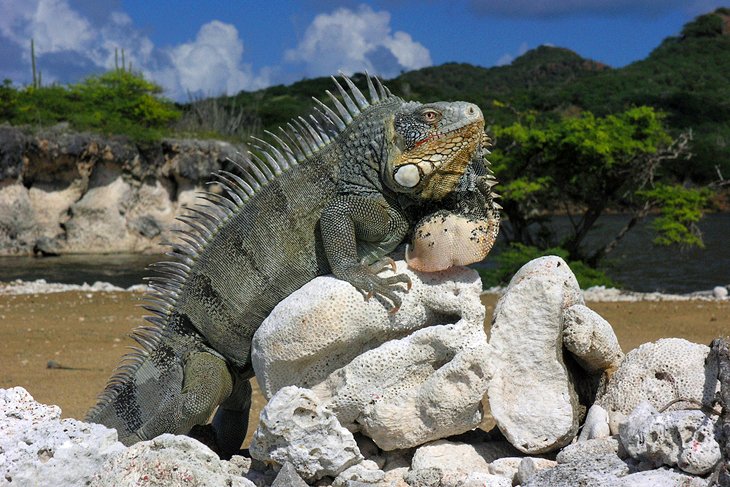
Occupying about one-fifth of the island of Bonaire, the Washington-Slagbaai National Park encompasses cactus-covered hillsides, mangroves, beaches, sand dunes, and salt pans. The park is best navigated in a four-wheel-drive vehicle because of the rugged dirt roads.
This is an excellent place to spot some of the island's many species of birds. Flamingos, herons, and parakeets are frequently seen here, and the plant life reflects the island's arid climate. Many species of cacti, as well as mesquite and Brazilwood trees, grow here.
Other animals found within the park include donkeys, goats, and iguanas, and all four species of Caribbean sea turtles nest on the beaches.
Subi Brandaris, the highest point on the island, offers a fine view of the surroundings. On clear days, you might even glimpse the coast of Venezuela. Note that there is a $45 fee to enter the park.
Official site: http://stinapabonaire.org/washington-slagbaai/
Klein Bonaire, Bonaire
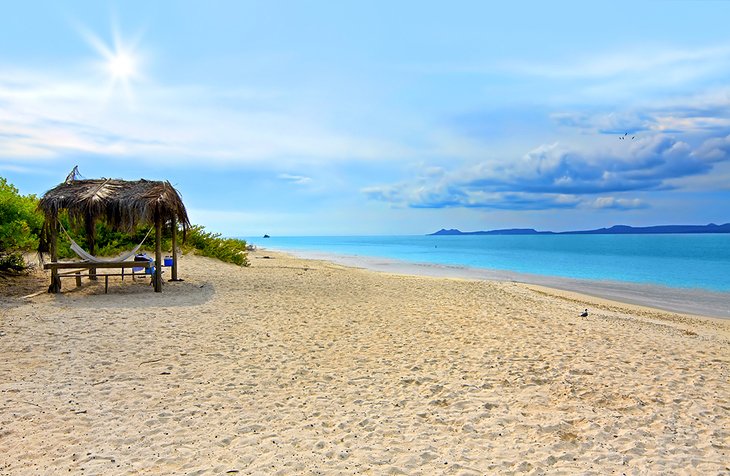
Part of the Bonaire National Marine Park, Klein ("little") Bonaire is a flat, uninhabited islet lying a mere 800 meters off Bonaire's concave west coast. Fringed by white sands, turquoise waters, and coral reefs teeming with marine life, this island is a favorite of divers and snorkelers. Large reef fish, many pelagic species, turtles, and seahorses swim these translucent waters, and many dive sites can be accessed from shore.
No Name Beach here is arguably the best beach in Bonaire. Water taxis and dive boats transport visitors across from Kralendijk, but you need to bring your own food, refreshments, and shade protection.
Lac Bay, Bonaire
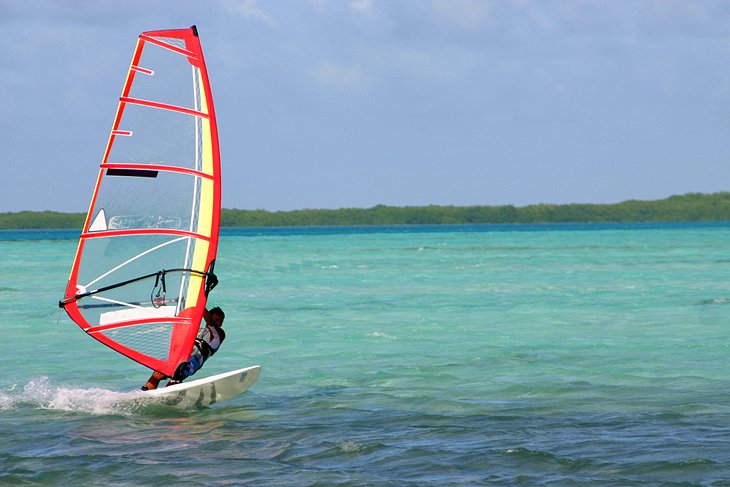
On Bonaire's eastern windward side, Lac Bay (Lac Baai) is a hot spot for windsurfing. Smooth waters and steady winds create excellent conditions for both beginner and more advanced windsurfers.
Thanks to the bay's shallow waters and prolific marine life, stand up paddleboarding and kayaking are also popular here.
The mangrove forest of Lac Bay is one of the best preserved in the Caribbean. In the seagrass beds between the mangroves and reef, snorkelers may spot queen conchs, stingrays, and lobsters.
Mangrove Kayak Tours, Bonaire
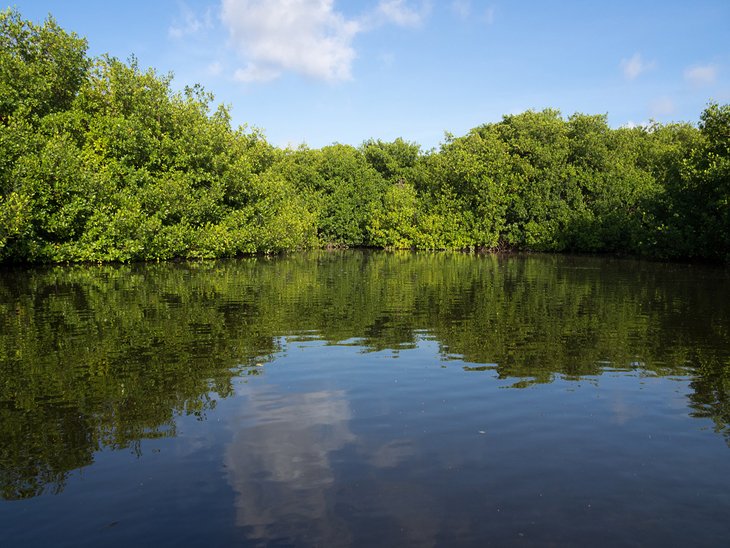
The Mangrove Information Center offers guided kayaking and snorkeling tours through the pristine mangrove forests of Lac Bay. The seagrass beds here are a fertile environment for marine species such as conch, lobsters, stingrays, juvenile reef fish, and green turtles, and the clear, shallow waters are perfect for snorkeling.
Paddling through this fragile environment, you'll learn all about how the plants and animals are uniquely adapted to survive here. Tours are also offered in solar boats for those who prefer not to kayak.
Kralendijk, Bonaire
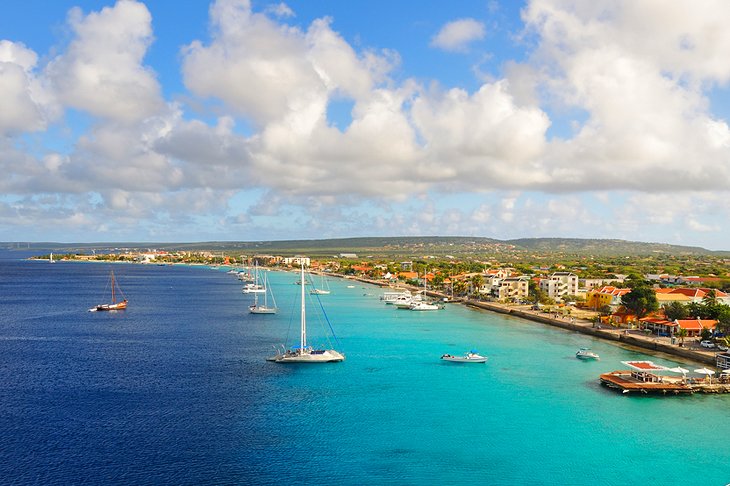
Kralendijk, which means "coral reef," is the capital of Bonaire and its main port. Dutch colonial houses painted in bright pastel colors line the streets, and cruise ships dock here from November through April.
Feel like a shopping fix? On Breedestraat, the main shopping street, you can purchase shell art, local carvings, fabrics, and clothes. Duty-free shops are also along this stretch, and fishermen sell their catch every morning at the harbor. When the cruise ships visit, market stalls selling island-made products pop up around Wilhelmina Square.
To learn about the history of Bonaire and the Caribbean, stop by the wonderful Terramar Museum. Occupying a restored historic building in the center of town, the museum traces more than 7,000 years of the island's history. It's a great place to visit when you first arrive on the island.
After exploring the city, if you just want to relax by the sea, head to Ocean Oasis Beach Club. Here, you can recline on sun loungers along the beach with snacks and refreshments. Palapas provide plenty of shade.
From Kralendijk, water taxis whisk divers and snorkelers across the bay to the uninhabited islet of Klein Bonaire.
The Quill Hiking Trails, St. Eustatius
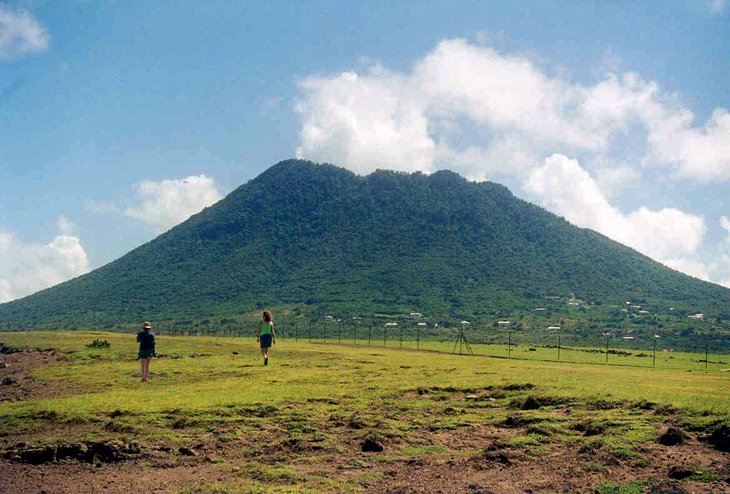
You can't miss The Quill on St, Eustatius. Rising 600 meters above sea level in Quill/National Park, this volcanic cone is the island's dominant topographic feature. And hiking up it is one of the top things to do in St. Eustatius.
Eight different trails thread their way through this rugged landscape. The most popular is the Quill Trail, which takes you up through lush forest to the crater rim. From here, you can take the Mazinga Trail to the island's highest point. Stop to rest here and soak up the spectacular views.
For a different perspective, you can venture through lush forest deep into the crater itself on the aptly named Crater Trail. Shorter trails lead through a variety of tropical flora, including wild orchids, ferns, and fruit trees. A limestone formation known as White Wall lies on the south side of the volcano.
Start early in the day to beat the heat, and if you want to save your energy for hiking the trails, it's best to take a taxi to the trailhead. Be sure to bring plenty of water, too.
Only two miles from The Quill, Boven National Park covers the island's Northern Hills and is much drier. Cactus, acacia, and rock outcrops pepper the grasslands, and you can explore the arid landscape on hiking trails as well. Looking for the perfect picnic spot? Venus Bay here is a picturesque spot to rest your weary legs after tackling the thigh-burning trails.
Statia National Marine Park, St. Eustatius
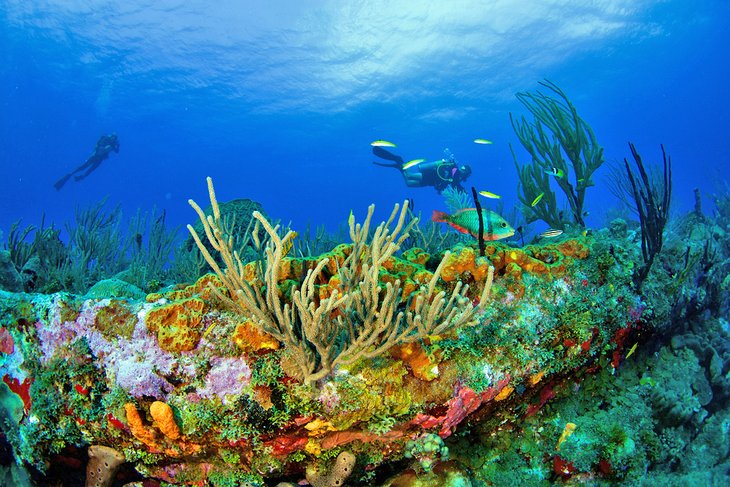
Diving in the marine park is one of the most popular things to do in St. Eustatius. Comprised of the Northern and Southern Reserves, the Statia National Marine Park rings the island and is only open to visitors accompanied by local operators.
The dive sites are diverse, with everything from volcanic fissures and mini-walls to drop-offs, pinnacles, and wrecks. The marine life on the relatively healthy natural and artificial reefs is just as varied. You can see plenty of tropical fish, as well as sharks, lobsters, turtles, seahorses, and octopus. Dive moorings make it easy to access the sites without damaging the reef.
If you prefer to snorkel, you can explore three sites within the reserve, but both divers and snorkelers must purchase a dive permit, which goes towards mooring maintenance.
Donkey Sanctuary Bonaire
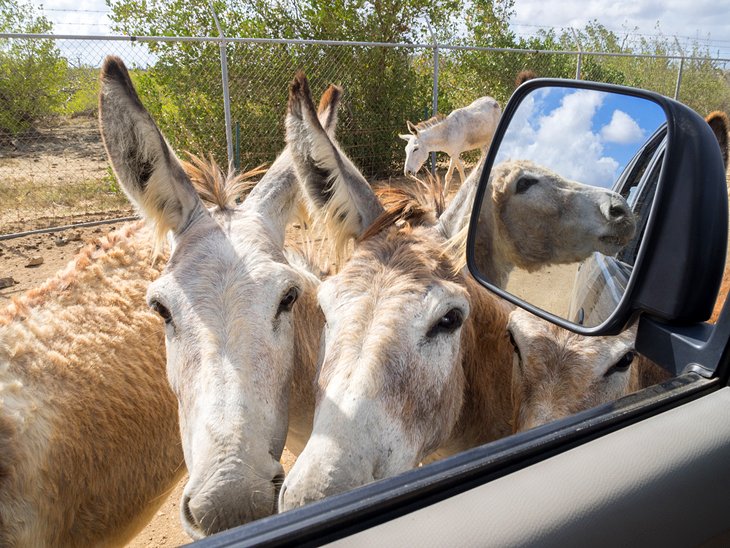
Even if you're not a donkey lover, a visit to the Donkey Sanctuary in Bonaire will warm your heart. Donkeys were first brought to Bonaire by the Spaniards in the 17th century, but were left to fend for themselves on this dry, barren island after they were no longer needed. The sanctuary rescues injured and sick donkeys, nursing them back to health and hand-raising orphaned animals.
Hundreds of these charismatic creatures swarm your car as you arrive, poking their heads through the windows and gently accepting carrots, which are available for purchase. Your entrance fee and donations go towards the costs of caring for all the donkeys.
Official site: https://donkeysanctuary.org/en/
Oranjestad, St. Eustatius
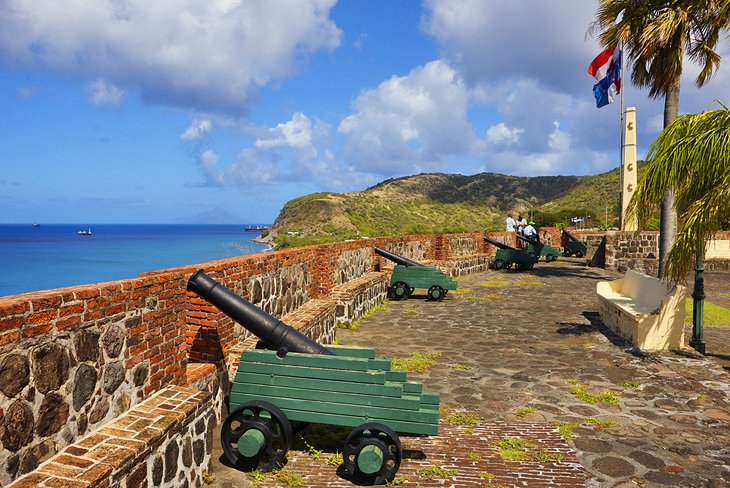
Oranjestad, the only town on St. Eustatius, sits high on a cliff overlooking the Caribbean on the island's west coast. This former merchant hub is divided into Upper and Lower Towns.
You can explore a number of 18th-century ruins in the lower area around the bay, with businesses and more recent development in the Upper Town. Overlooking Lower Oranjestad, the preserved 17th-century Fort Oranje retains its cannons and bastions.
The St. Eustatius Historical Foundation Museum in Oranjestad displays household and nautical articles and antiques, and the Dutch Reform Church has been in ruins since the roof was destroyed in the 18th century, but you can still climb its tower for a clear view of the island.
Near Oranjestad, on a hilltop, are the remains of 18th-century Fort de Windt, with beautiful views over the ocean to neighboring St. Kitts.
More Related Articles on PlanetWare.com
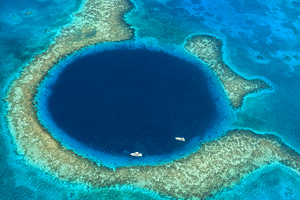
Other Top Caribbean Diving Destinations: Diving is one of the top things to do in the Cayman Islands. Here, many of the top dive sites lie a short kick from shore, and Bloody Bay Wall, off Little Cayman, is one of the most famous dive sites in the Caribbean. Home to the second biggest barrier reef in the world and the Great Blue Hole, Belize is another top diving destination.
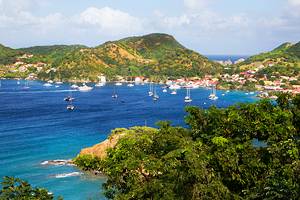
Hiking in the Caribbean: If you prefer land-based nature, hiking trails take you to many of the highlights of Dominica, including its lushly cloaked volcanic peaks, hot springs, and picturesque waterfalls. Hiking to the top of active volcano Mount Pelee is also one of the top things to do in Martinique.


